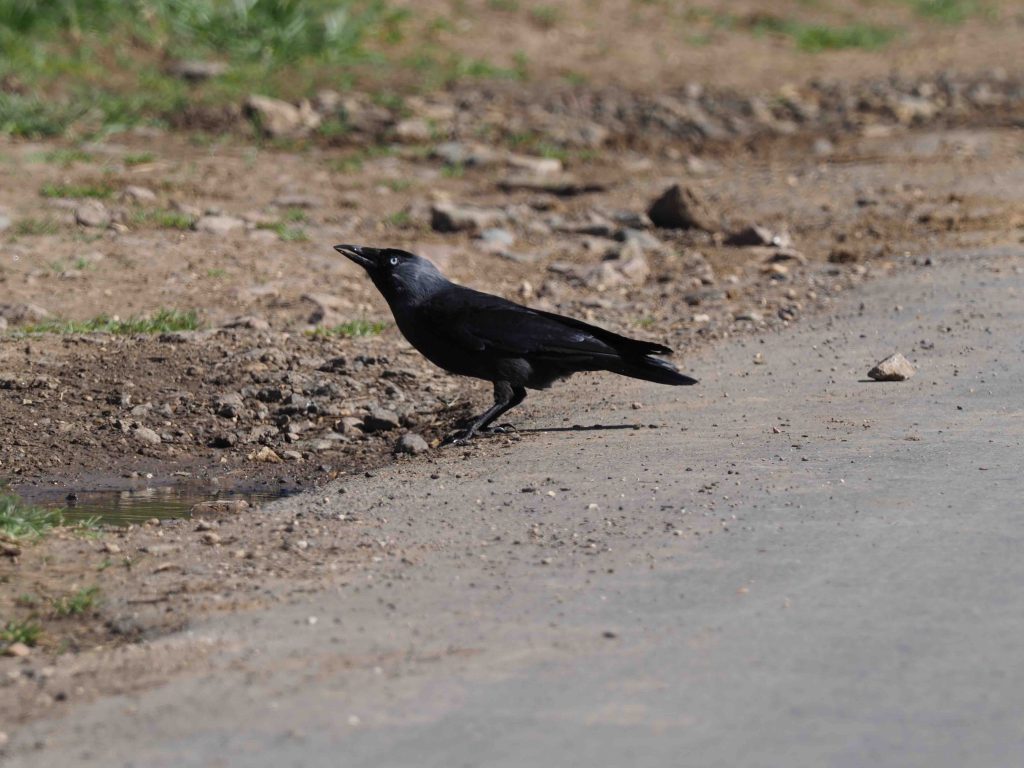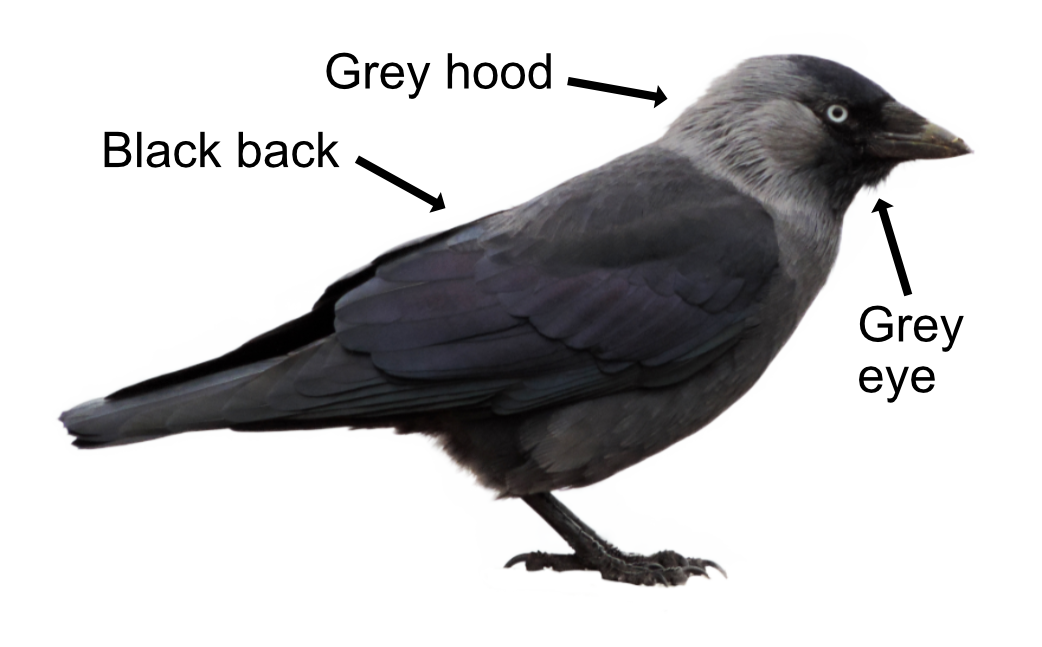
The Jackdaw, with his grey hood and black cap, can look a bit like the magistrate of the birds, though in fact he is more of a thief, with his love of pinching shiny things.
Smaller than a Carrion Crow, the Jackdaw is a stocky bird with a grey 'hood' and steely grey eye. They are most often seen in pairs or flocks known as a "clattering" and usually mixed up with Rooks or Starlings, like a black bird brotherhood. They form communal roosts and can be found anywhere from farmland to the seashore. Their main call is "Jack", like their name, and they say it as if happy or excited. In fact, Jackdaws have a complicated system of communication using combinations of different postures and calls. They are highly intelligent, so getting into your bird feeder for a snack is child's play. The Jackdaw's flight is light and agile. The wing 'fingers' rarely show, so the wings look rounded at the end when compared to a Rook or Carrion Crow.
The Jackdaw feeds mainly on the ground and walks or hops along while eating insects, grain, seeds, fruit, berries, eggs and even young birds. They are happy to scavenge on rubbish tips and will eat most human scraps from a bird table. They are not fussy eaters but have dreadful table manners and will hide food to enjoy later.

Jackdaws are very loyal and will pair up with a lifelong mate, snuggling up to one another on the nest and preening each other. When ready to start a family, they both build the nest which is made of sticks lined with wool, hair or other soft material. They nest with other Jackdaws in loose colonies, usually in trees, but they can use cliffs, the tops of buildings, or a comfy chimney - which is annoying when they block yours (and why chimneys are fitted with cowls). The female incubates the 4-6 pale blue-green darkly speckled eggs for 18 days. Both parents feed the young which remain in the nest for 32 days before they can fly. It is a further week before the youngsters can fly well enough to strut their stuff on the rubbish tip.
Jackdaws are both resident and migratory, moving south from the bleaker upland areas of Britain, joining their Northern Continental cousins who pop over in the winter and go home in spring. This is why there seems to be more in winter. There are 1.4 million pairs in Britain and the numbers are increasing. The oldest ringed Jackdaw lived to be 14.
The Jackdaw's Latin name is 'corvus monedula' where 'corvus' means 'raven' and the 'monedelua' part comes from their liking of bright shiny objects. It is derived from the Latin for 'money'. Some Italian thieves once exploited this and trained a tame Jackdaw to steal money from cash machines! So a Jackdaw is a money raven. The jury is out on where their English name came from. Some say the 'Jack' part comes from 'Jack' meaning rogue while others say it is from the sound of their call.
An ancient Greek and Roman adage runs "The Swans will sing when the Jackdaws are silent", meaning that educated or wise people speak only after the foolish have become quiet. It is a bit mean to call an intelligent bird like the Jackdaw uneducated. In some cultures, a Jackdaw on the roof is said to predict a new arrival; while in others, a Jackdaw settling on the roof or flying down a chimney is an omen of death. In the Fens, seeing a Jackdaw on the way to a wedding is a good omen for a bride, but Fen people have always been a bit odd.